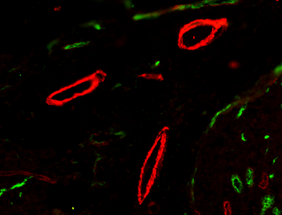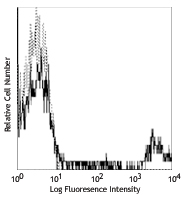- Clone
- Poly4064 (See other available formats)
- Regulatory Status
- RUO
- Isotype
- Donkey Polyclonal Ig
- Ave. Rating
- Submit a Review
- Product Citations
- publications
| Cat # | Size | Price | Quantity Check Availability | Save | ||
|---|---|---|---|---|---|---|
| 406401 | 500 µL | 113€ | ||||
This polyclonal donkey anti-rabbit IgG antibody reacts with the heavy chains of rabbit IgG and with the light chains common to most rabbit immunoglobulins. No cross-reactivity has been detected against non-immunoglobulin serum proteins. This antibody has been solid-phase absorbed to ensure minimal cross-reaction with rat, human, bovine, horse, and mouse immunoglobulins, but it may cross-react with other subclasses of rabbit immunoglobulins.
Product DetailsProduct Details
- Reactivity
- Rabbit
- Antibody Type
- Polyclonal
- Host Species
- Donkey
- Formulation
- Aqueous buffered solution containing a carrier protein and preservatives.
- Preparation
- The polyclonal antibody was purified from donkey antiserum by rabbit immunoglobulin affinity chromatography.
- Storage & Handling
-
The antibody solution should be stored undiluted between 2°C and 8°C, and protected from prolonged exposure to light. Do not freeze.To obtain lot-specific expiration date, please enter the lot number in our Concentration and Expiration Lookup or Certificate of Analysis online tools.)
This product has a shelf-life of 12 months or less. Please use our Expiration Lookup Tool to verify the expiration date of your lot of product - Application
-
WB - Quality tested
ELISA, IHC - Reported in the literature, not verified in house - Recommended Usage
-
Each lot of this antibody is quality control tested by Western blotting. For ELISA or Western blot analysis, the reagent should be titrated between 1:1,000 - 1:5,000 to determine optimal conditions. For IHC on tissue sections, the reagent should be titrated between 1:500 - 1:2000 to detemine optimal conditions. Avoid using diluent solutions containg sodium azide. Sodium azide is an inhibitor of horseradish peroxidase. It is recommended that the reagent be titrated for optimal performance for each application.
- Application Notes
-
This conjugated polyclonal donkey anti-rabbit IgG antibody is useful for immunofluorescent staining for flow cytometry, or microscopy.
- Product Citations
- RRID
-
AB_2099368 (BioLegend Cat. No. 406401)
Related Pages & Pathways
Pages
Related FAQs
Customers Also Purchased
Compare Data Across All Formats
This data display is provided for general comparisons between formats.
Your actual data may vary due to variations in samples, target cells, instruments and their settings, staining conditions, and other factors.
If you need assistance with selecting the best format contact our expert technical support team.
 Login / Register
Login / Register 










Follow Us